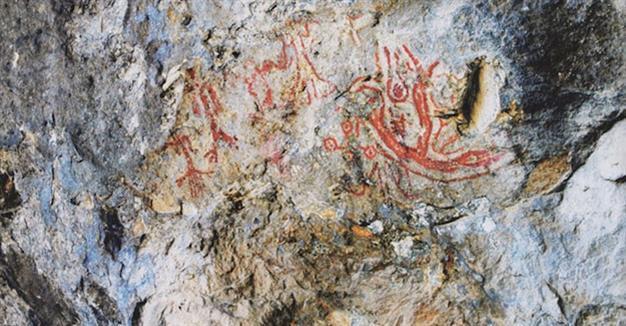8,000-year-old cave paintings found in Turkey’s Balıkesir
BALIKESİR

A number of cave paintings dating back some 8,000 years have been found in Baltalıın and İnkaya caves in the Marmara province of Balıkesir during a field study conducted by Associate Prof. Dr. Derya Yalçıklı from Çanakkale (18th March) University, the Arkeofili website has reported.
The paintings, which date back to the Late Neolithic era, were located in two caves five kilometers apart and were said to be 8,000 years old, marking one of the most important archaeological discoveries made in Anatolia in recent years.
When the two caves were analyzed separately, it was revealed they were used for different functions, as the paintings in one of them depicted hunting figures, while the other depicted figures of beliefs.
The floor and northern wall of the İnkaya Cave was greatly damaged by past treasure hunters using dynamite, however, despite this damage, the cave continues to reflect important information about the Neolithic era.
A deer hunt is depicted on the eastern wall of the Baltalıın cave.
The paintings also included a scene never depicted before, in which a trap is set by hunters and a group of animals is driven towards the trap. There are also four people dancing in the main part of the painting on the left side of the entrance.
A different depiction of a human wearing fur on the right side of two women and two men is depicted, while on the left side of this painting there is a depiction of a fetus growing in the womb.
A human wearing fur appears at the beginning of the main stage. Across from this figure, a human is depicted with a snake behind. It was believed that the snake represents the death in this figure, which was interpreted as “the moment of death” by the experts.
The depiction of a human wearing a fur and extending his hand forward is believed to be a shaman who is helping human spirits to go the land of the dead at the moment of death.
A portrayal of a dead human without a head offered to the vultures is also depicted.
 A number of cave paintings dating back some 8,000 years have been found in Baltalıın and İnkaya caves in the Marmara province of Balıkesir during a field study conducted by Associate Prof. Dr. Derya Yalçıklı from Çanakkale (18th March) University, the Arkeofili website has reported.
A number of cave paintings dating back some 8,000 years have been found in Baltalıın and İnkaya caves in the Marmara province of Balıkesir during a field study conducted by Associate Prof. Dr. Derya Yalçıklı from Çanakkale (18th March) University, the Arkeofili website has reported.